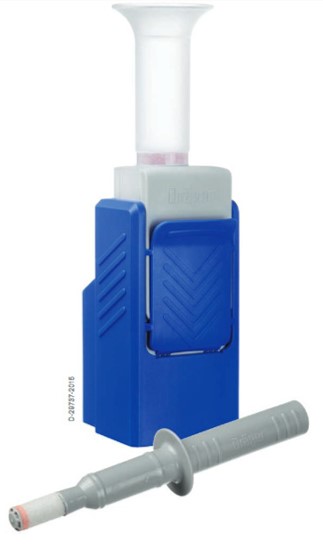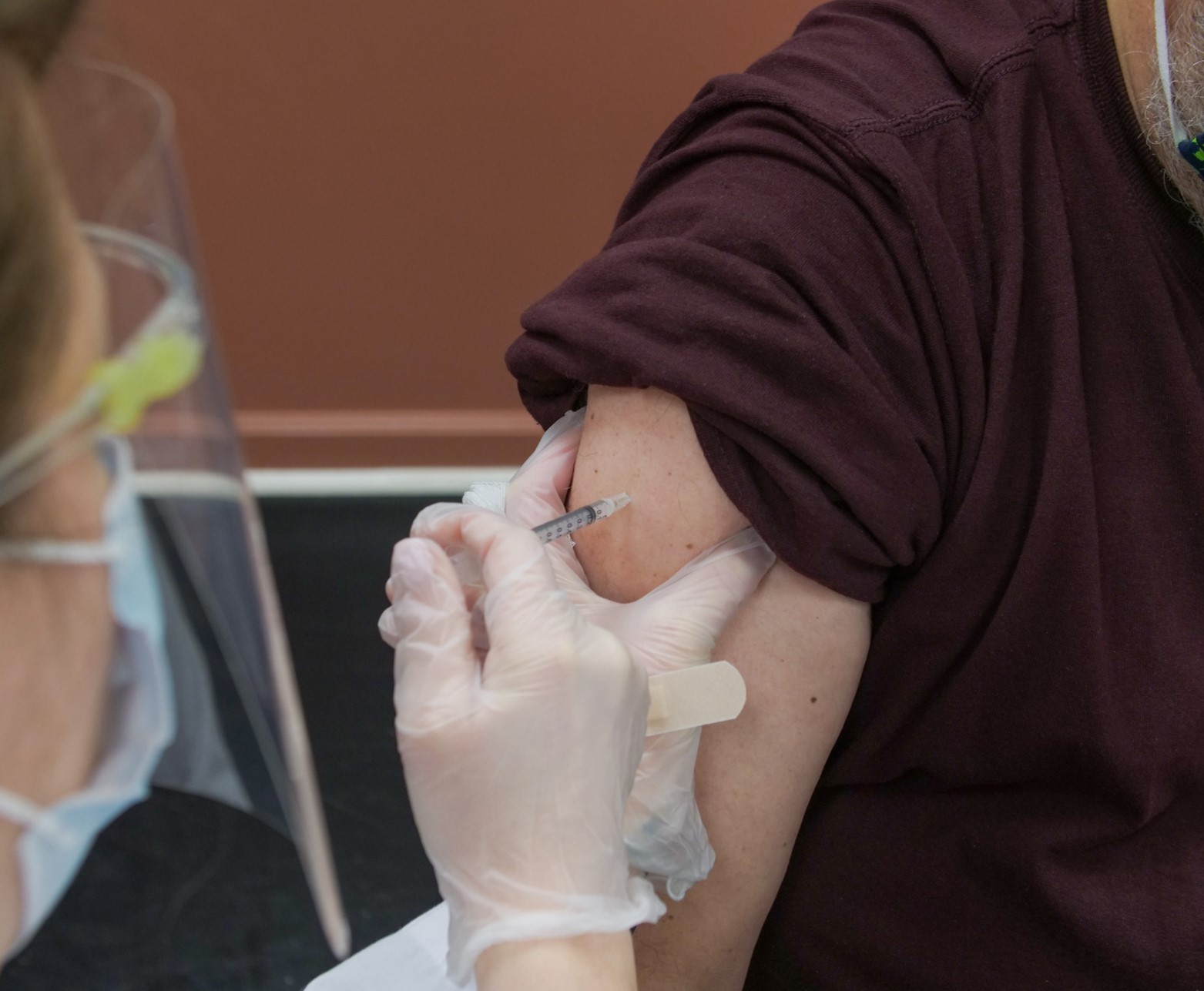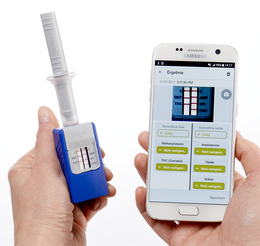
by impact | Nov 4, 2023 | News
DC 3000 – Introducing the Draeger DrugCheck (DC) 3000 from Inscience
Are you looking for a cutting-edge solution to ensure safety and compliance in your workplace? Look no further than the Draeger DrugCheck 3000.
Inscience are the premium NZ distributor of this unique drug screening device which sets the gold standard for accuracy, reliability, and ease of use in any non instrument supported saliva drug test . Whether employed by a law enforcement officer, a healthcare professional, third party service provider or a workplace/employer, the DrugCheck 3000 is designed to meet your needs and exceed your expectations.
Z
The DrugCheck 3000 utilizes Draegers advanced impairment check technology to detect the AS/NZS4760:2019 panel of most commonly used drugs with potential to impair which includes marijuana(THC), cocaine, methamphetamine, amphetamines and opiates. With its high sensitivity and specificity, which translates to less cost from false positives, you can rely on its results with confidence.
Z
In just minutes, the DrugCheck 3000 is the most rapid for specimen collection and time to result. It delivers accurate and actionable results, allowing you to make informed decisions for safety quickly.
Z
The DC 3000 device is designed with simplicity in mind. Its intuitive interface ensures ease of use, even for those without extensive technical expertise although all workplace related drug screening must be performed by a suitable(NZQA) qualified person. See our
training page to find out more.
Z
Compact and lightweight, the DrugCheck 3000 is easy to carry and use in various settings. It’s ideal for on-the-go testing or as a reliable option in your workplace.
Z
Stay in line with legal and regulatory requirements effortlessly. The Drugcheck 3000 is fully verified to AS/NZS4760:2019. The DrugCheck 3000 is designed to help you maintain a safe and drug-free environment.
Z
Not only is the Draeger DC3000 supported with amazing technical support from Inscience as Draegers premium NZ distributor but you will have free access to a mobile/tablet APP lication that provides a “how to use video” with the app help for timing while recording everything you need in a report including interpretation of results on a form you can email as an encrypted report immediately from your device.
Trust in the Draeger DrugCheck 3000 to keep your workplace, whanau, community, and roads safe from the risks associated with impairing drugs and consider combining its use with Draegers range of certified AS3547:2019 breathalysers as used by NZ Police. Discover a new level of confidence in drug screening technology with the Draeger DrugCheck 3000 – your partner in safety and compliance.
Contact us on +64 (0)9 376 0121 today to learn more about how the DrugCheck 3000 can benefit your organization or operation, or order now.

by impact | Sep 27, 2023 | News
The use of medicinal cannabis among adults in New Zealand is on the rise, leading to concerns about health impacts. Doctors are often reluctant to discuss the topic or inform patients about potential risks.
However, cannabis can have serious side effects, especially when combined with certain medications, and older adults may be more sensitive to its effects. It can interact negatively with drugs like warfarin and clobazam, leading to dangers such as internal bleeding. Doctors also need to be aware of their patients’ cannabis use before surgery, as anesthesia requirements may differ.
Lack of education on cannabis in medical school contributes to doctors’ hesitation in advising patients. While cannabis can provide relief for conditions like depression and anxiety, doctors should address underlying causes and consider work safety and drug tests. Educating doctors about cannabis during training would better equip them to support patients using it medicinally.

by impact | May 22, 2023 | News
RSV here this winter with a vengeance
Before the COVID-19 pandemic in early 2020, most RSV seasons were pretty typical – A Flu/RSV season would start in the late Autumn with cases trickling in from mid- to late April, and then a peak in late July to mid-August. By the time spring rolled around in most temperate climates, you would see much less circulation of RSV.
This year in Europe and USA, we saw RSV come back with a vengeance and really start to tick up a lot earlier in their Autumn, peak later and last longer. A lot of people, especially children, presented in a very short time period and with much higher hospitalization rates in the northern winter than in the past.
It’s interesting because the COVID 19 pandemic and lockdowns disrupted the circulation of RSV and other common respiratory viruses and this none more so than during the extended lockdowns in NZ. So as we come into winter 2023, we expect a similar abnormal pattern as the Northern hemisphere and increased cases of RSV and other respiratory virus, as well as the Omicron variant Covid virus.
In short: by the time we get to this NZ winter 2023 it is anticipated we will see co-circulation of SARS-CoV-2 and flu during NZ winter time and at significantly higher than it has been in previous typical seasons.
What diagnostics do we have for RSV/ Flu/ Covid 19?
Before the pandemic, we often didn’t have to use a diagnostic test if it was the middle of Autumn /winter and an adult or child came in with wheezing and symptoms that were consistent with bronchiolitis. You could make that diagnosis on history and physical aspects alone. You knew it was RSV season, it was probably RSV causing that episode of bronchiolitis especially if a child in their first year of life. Then came Covid 19 and we added the COVID 19 RAT or PCR to our diagnostics. Now, because of the atypical season and circulation, reduced antibodies and immunity that we’ve been seeing, an accessible rapid diagnostic tool with flu/RSV and SARS-CoV-2 is a significant advantage to have. Is it wise or safe to have someone with cold/flu symptoms at work undiagnosed? How many people continue to work when their Covid-19 RAT is negative? With the Nasal pentest 4 in 1, we/you get to see four different very significant respiratory viruses with a single swab panel.
Vaccinate, diagnose and isolate are the three key elements to safety from respiratory virus in the workplace. Click the button below to find out how InScience can help you.
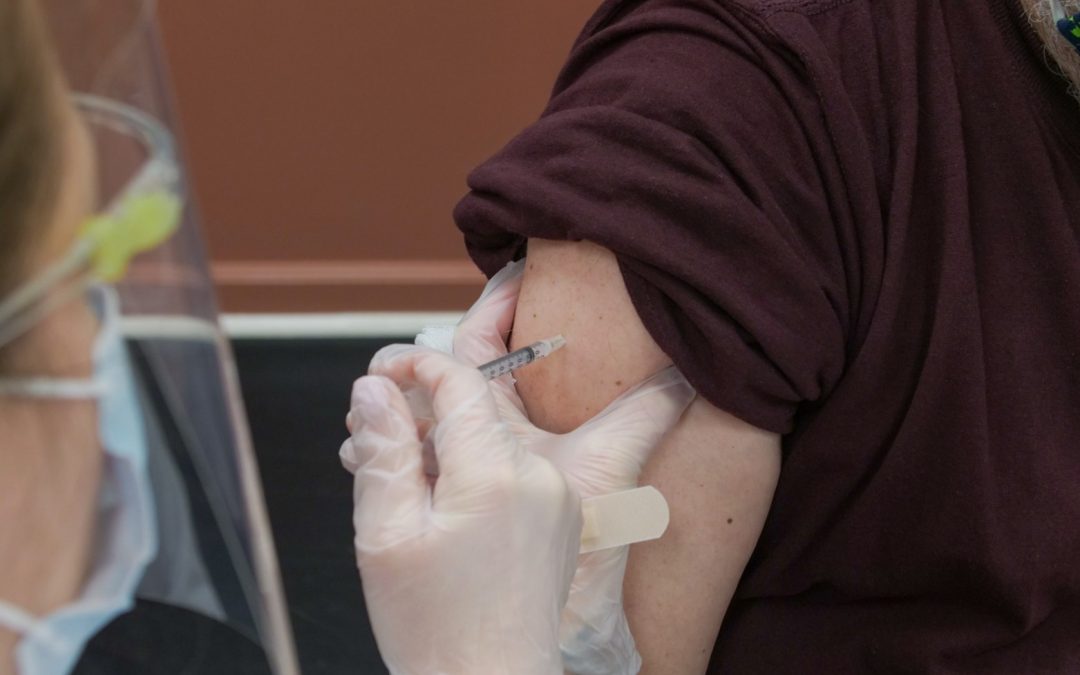
by InScience | May 4, 2023 | News
Vaccination for Covid (boosters) and the ‘flu vaccination can now be administered in one visit. Vaccination – love it or hate it – will assist in reducing the number of NZers getting these viruses and passing them on, will also reduce the severity of the ‘flu and or COVID which may otherwise require hospitilisation over our coming NZ winter.
I recently posted about a Swiss study which noted that “Vaccination still plays a significant role regarding the main outcome”, since a secondary analysis in this most recent study showed that unvaccinated COVID patients were twice as likely to die compared to ‘flu patients.
“Our results demonstrate that COVID-19 still cannot simply be compared with influenza,” they wrote. While the death rate among COVID patients was significantly higher, there was no difference in the rate that COVID or ‘flu patients were admitted to the intensive care unit, which was around 8%.
Source
JAMA Network Open: “Hospital Outcomes of Community-Acquired SARS-CoV-2 Omicron Variant Infection Compared With Influenza Infection in Switzerland.”

by InScience | May 1, 2023 | News
A recent study out of Switzerland examined the risks posed by Influenza A and B and RSV alongside Covid 19 variants which all have significant winter mortality rates to concern us in NZ this winter.
Inscience have just launched a 4 in one rapid nasal pen test to support workplaces in their risk evaluation this winter season.
This new product is a rapid test format and unique to have 4 relevant and predominant respiratory virus detectable and identified on one test.
COVID-19 remains deadlier than influenza in severe cases requiring hospitalization, a new study shows.
People who were hospitalized with Omicron COVID-19 infections were 54% more likely to die, compared to people who were hospitalized with the flu, Swiss researchers found. The results of the study continue to debunk an earlier belief from the start of the pandemic that the flu was the more dangerous of the two respiratory viruses. Researchers noted that the deadliness of COVID-19 compared to flu persisted “despite virus evolution and improved management strategies.”.
Maybe because of this the New Zealand government remains committed to maintaining the requirement for those testing positive for Covid to remain isolated for 7 days after testing positive. This places pressure on business and leaves gaps in workplace ability to get through normal workflow. There are no such requirements for the flu however those that do test positive for Influenza A and B or RSV on the Rapid pentest 4 in 1 should isolate until negative and symptoms abate.
It is important for NZ employers to continue to require employees to test for Covid to determine the length of required sick leave. It will be important through the winter months to maintain this testing.
The study referenced was published this week in JAMA Network Open and included 5,212 patients in Switzerland hospitalized with COVID-19 or the flu. All the COVID patients were infected with the Omicron variant and hospitalized and Flu data included cases of Influenza A and B and RSV (Respiratory syncytial virus).
Overall, 7% of COVID-19 patients died, compared to 4.4% of flu patients.
“Our results demonstrate that COVID-19 still cannot simply be compared with influenza,” they wrote. While the death rate among COVID patients was significantly higher, there was no difference in the rate that COVID or flu patients were admitted to the intensive care unit, which was around 8%.”
Source:
JAMA Network Open: “Hospital Outcomes of Community-Acquired SARS-CoV-2 Omicron Variant Infection Compared With Influenza Infection in Switzerland.”
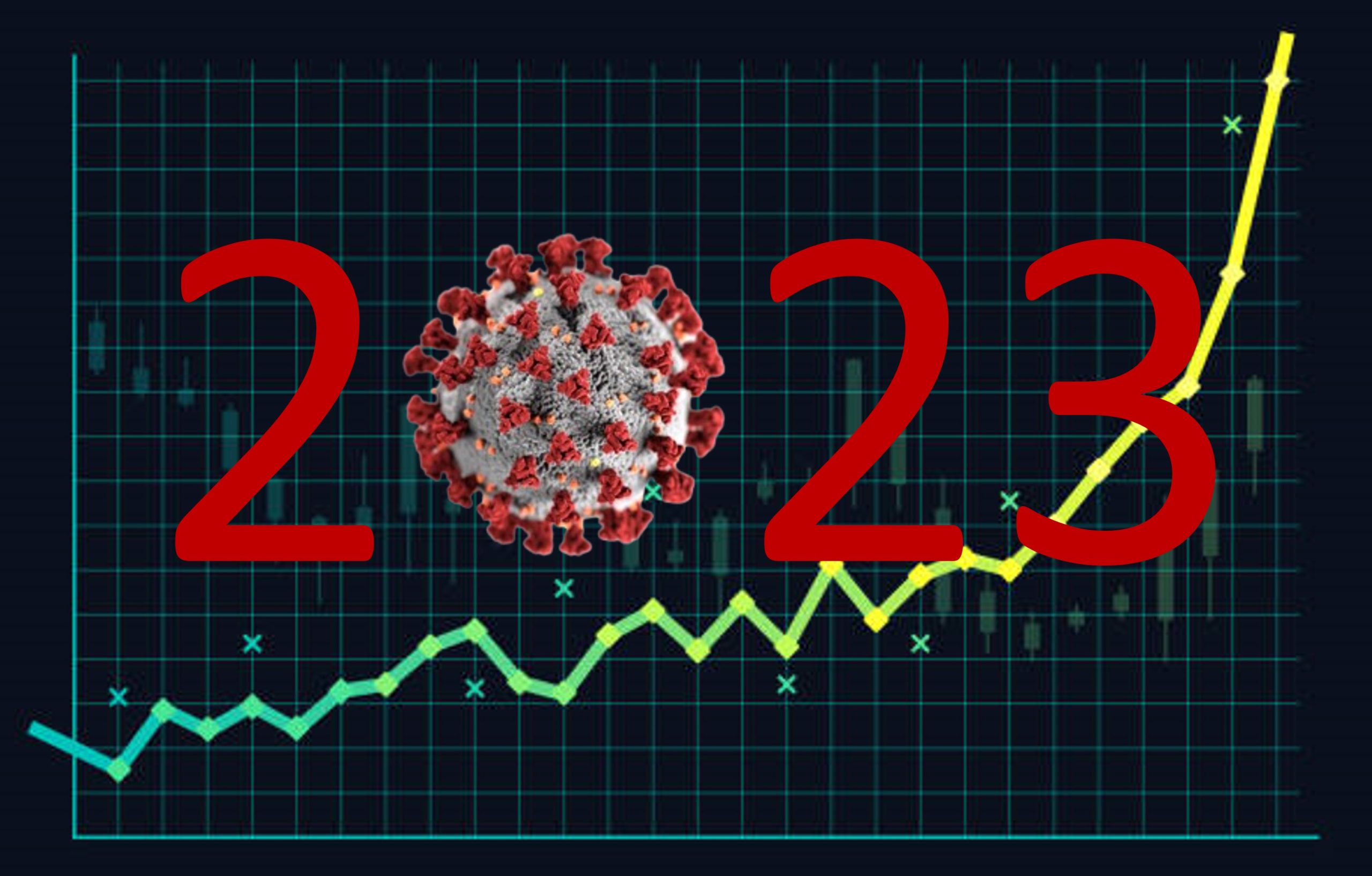
by InScience | Jan 9, 2023 | News
“Pandemic transition to Endemic, emerging variants, China surge in infections, vaccination and measures to reduce transmission”
Experts tracking the pandemic agree there is and will continue to be surges and evolving challenges with Covid infections in 2023. NZ is in the midst of a surge now, with a vast majority of infections going unreported and not included in our statistics. The surge may not be providing as bad a situation as previously experienced and having just had my first event with Covid over Christmas, I feel blessed I wasn’t very sick. Those with underlying conditions and those who are unvaccinated, however, are the most at risk – as are businesses that rely on them. Why business? Well absenteeism causes intermittent manpower shortages when Covid runs through the workplace, and those with sensitive export markets are required to test as part of their contracts.
Do we need to worry about subvariants? Well, the good news is that to date the subvariants are showing characteristics of less impact on serious illness and mortality rates, but worryingly they are more transmissible. Nonetheless, NZ has some worrying mortality rates.
Much of the waves of infections are not primarily driven by emergence of subvariants but rather by behaviour. People are opening up their social networks to gather for celebrations and family time providing a source of transmission driving infection rates that are under-reported.
Other experts are pointing out that anticipated future surges don’t just involve Covid and the 2023 winter will see a triple surge. They are referring to the rise of cases of flu and RSV (Respiratory Syncytial Virus) to add to Covid infections. Many share the concern, worrying that those illnesses may be what overwhelms hospital capacity.
Another wildcard is the situation for China with their easing of “zero covid” policies. The suffering that is occurring is not good news and we are going to see that for many weeks and months ahead. Peter Chin-Hong, MD, Professor of Medicine and Infectious Diseases at the University of California says that the increase in cases and variants in China whilst worrying can “throw a wrench“ in the transition from pandemic to endemic. But even if the rising cases in China do result in a new variant, there is so much T-Cell and B cell immunity here that your average person is still not going to get seriously ill, even if the variant looks really scary.
Recent studies find huge value in boosters which have reduced the risk of hospitalisations by 84% for someone vaccinated.
A vital tool in reducing transmission is rapid testing methods such as Rapid Immunoassay testing (take a look at the Ecotest Nasal Pentest RAT). These tests play a huge part in essential testing before and after travel, as well as prior to visiting with vulnerable individuals (the unvaccinated, the aged and those with underlying health conditions). Many essential businesses also look to continue to protect their business continuity with regular workplace RAT testing and realise the great benefit of reducing spread within the workplace.
If you want more information regards the circulating variants of Covid, the protection provided already by NZ bivalent vaccinations available, and the benefits of maintaining a protocol of RAT surveillance, let us know (you can send us a message here). Coming soon and available pre winter is an updated Ecotest Nasal pentest RAT, which is a 3 in 1 test to detect Covid 19, Influenza and RSV !

